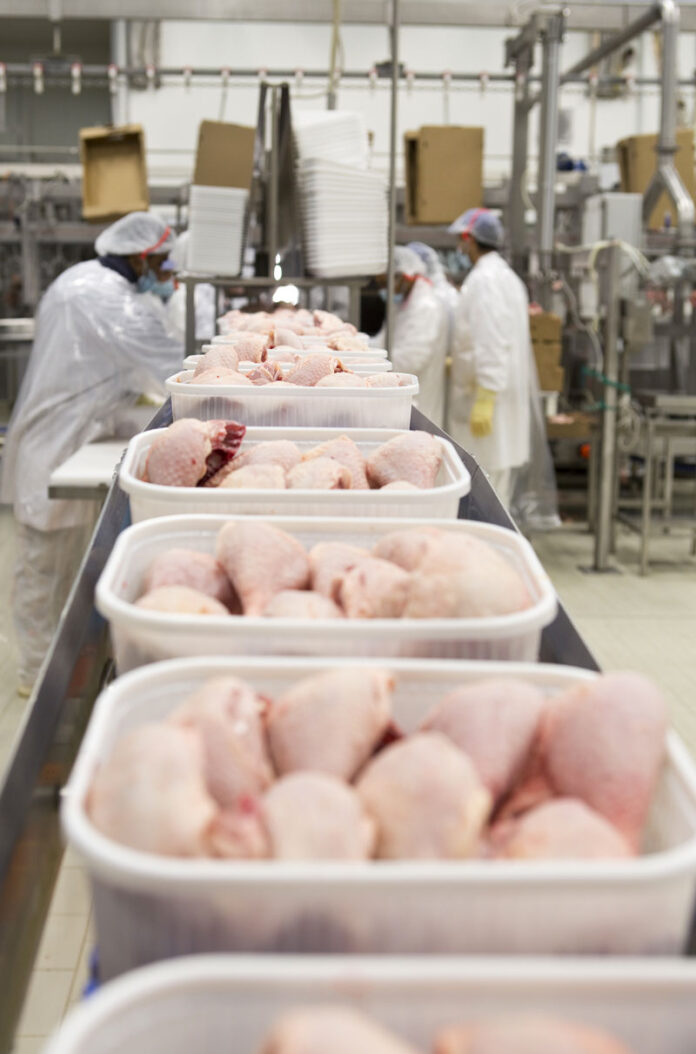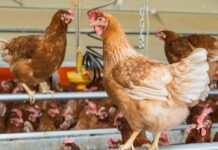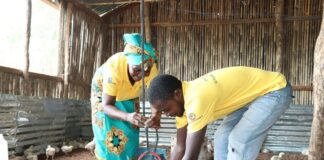
Increasing consumer attention toward low fat, high protein diets, and demand for healthy foods has led to a significant increase in the production and consumption of turkey meat. However, recalls due to contamination of turkey products with foodborne pathogens in recent years have brought significant economic losses to the industry and present a dynamic challenge that requires immediate action.
Grace Dewi MS, Claire Peichel MS, Shijina Manjankattil BVScAH, Anup Kollanoor Johny BVScAH, MVSc, PhD
Department of Animal Science, University of Minnesota – Twin Cities
Current U.S. turkey market
The poultry industry is an integral part of the United States economy, providing millions of jobs and billions of dollars in economic activity and government revenue. An 11% increase in the poultry industry’s economic impact since 2016 has been reported, indicating ongoing progress in this agricultural sector. As the United States is the world’s largest producer and exporter of turkeys and turkey products, the turkey industry alone has made an annual economic impact of $109.5 billion. The turkey industry also provided 440,739 jobs that generated $24.1 billion in wages and $8.5 billion in taxes.
Increasing consumer attention toward low fat, high protein diets, and demand for healthy foods has led to a significant increase in the production and consumption of turkey meat, both in the United States and around the world. Consumption of turkey in the United States is currently accounted at 12.8 kilograms per capita, and an analysis of the market performance has forecasted the global consumption of turkey meat to reach 6.7 million tons by 2025. In 2018 alone, the United States produced a total of 245 million turkeys, and the production totaled 7.6 billion pounds, an increase compared to the amount produced in 2017. The weighted average price of frozen turkey hens is currently higher than in 2019, and the average of the three previous years. The USDA has projected an increase in the estimated production of turkey meat in 2020 by 1,561 million pounds. However, recalls due to contamination of turkey products with foodborne pathogens in recent years have brought significant economic losses to the industry and present a dynamic challenge that requires immediate action.
Pathogens in turkey production
The presence of microorganisms in turkey meat production is a concern to the producers, retailers, and consumers. There are two main categories in which microorganisms of concern can be listed. The first are those that affect the rate of spoilage, and the second, those that present biological risks, resulting in food safety threats to humans. The USDA’s Food Safety Inspection Service (FSIS) indicated that the potential foodborne illness-causing microorganisms associated with turkeys include those of the Salmonella species, Campylobacter jejuni, Staphylococcus aureus, and Listeria monocytogenes.
Colonization of live birds and contamination of products with human enteric pathogens present a significant challenge for the industry because poultry and livestock serve as reservoir hosts for these pathogens. Salmonella and Campylobacter are commonly found in food-producing animals and birds, including turkeys. Furthermore, colonization of the poultry intestinal and reproductive tracts by these pathogens can present no symptoms. These situations make the identification of birds carrying the microorganisms near impossible and complicate efforts to prevent transmission of the bacteria within and between flocks.
Salmonella in turkeys
One of the major food safety threats that the turkey industry faces is the presence of Salmonella. Salmonella is the leading cause of foodborne illness-causing bacteria in the United States, resulting in an estimated 1.35 million foodborne illnesses per year, leading to 26,500 hospitalizations and 420 deaths. Since turkeys can be reservoirs for Salmonella, finding ways to mitigate the growth and spread of Salmonella within the birds themselves, and on turkey farms and processing facilities is necessary to reduce human foodborne illness sourced to turkeys.
In recent years, the United States poultry production has encountered severe foodborne outbreak setbacks from various serovars of Salmonella, which includes the well-known serovars and the emerging. The common serovars encountered in poultry production are S. Enteritidis, S. Typhimurium, and S. Heidelberg. A significant concern with the emerging serovars is the potential to develop antibiotic resistance in the strains. For example, in 2011, a multidrug-resistant serovar S. Heidelberg caused an outbreak in the United States, resulting in 136 cases of foodborne illnesses across 34 states due to the consumption of contaminated ground turkey. In the same year, an outbreak of multidrug-resistant S. Hadar was linked to the consumption of contaminated turkey burgers. This strain was found to be resistant to amoxicillin-clavulanate, ampicillin, cephalothin, streptomycin, and tetracycline.
Additionally, a massive multistate outbreak of salmonellosis caused by another serovar, S. Reading, resulted in 356 illness cases across 42 states in the United States from November 2017 to March 2019. The products implicated in the outbreak included contaminated raw turkey pet food and turkey products, as well as live turkeys. Although the whole genome sequencing analysis could not identify predicted antibiotic resistance in the isolates obtained from patients, foods, and animal samples, 76% of the isolates contained genes for resistance to one or more antibiotics such as ampicillin, streptomycin, sulfamethoxazole, tetracycline, gentamicin, and kanamycin. In line with these outbreaks, around 78,000 pounds of raw ground turkey products were recalled due to the contamination with S. Schwarzengrund, an emerging foodborne outbreak-causing serovar. As of May 2019, this outbreak resulted in 7 reported cases of salmonellosis across 3 states and recall of ground turkey products.
Pre-harvest and post-harvest Salmonella contamination
Within a turkey farm, reducing Salmonella to the lowest levels is an important strategy to further reduce or eliminate the bacteria during the processing stages. Since turkeys can be reservoirs for Salmonella, the bacteria could colonize within the gastrointestinal tract of the bird without exhibiting any clinical symptoms. Consequently, Salmonella can be excreted in the feces of colonized birds and spread to healthy birds. Although antibiotics were previously used to reduce pathogen load in birds, the advent of Veterinary Feed Directive issued by the United States Food and Drug Administration (FDA) has curbed and mandated veterinary oversight on the number and amount of antibiotics that can be used on farms.
Throughout turkey processing, Salmonella can spread from one carcass to another at various steps. The first critical step is within the scalding tanks, where carcasses are immersed in hot water to facilitate feather removal. This step presents a high risk for cross-contamination due to the organic load from feces and feathers. Furthermore, the removal of internal organs during the evisceration step also presents similar risks in the transfer of pathogens across carcasses. Spillage of contents from the gastrointestinal tract, a potential niche for pathogens like Salmonella, can lead to the contamination of other carcasses as well as the processing equipment.
Alternatives to antibiotic interventions
First, no intervention can demonstrate significant efficacy in preventing the transmission of hazardous pathogens in the absence of proper animal husbandry. Thus, the implementation of appropriate biosecurity measures and hygienic practices is a prerequisite for effective control of food safety hazards in turkey production. Several interventions that are either applied at the pre-harvest or post-harvest stages of production have had their potential applications explored. These strategies are developed to prevent foodborne infections by mitigating the risk of microbial contamination in food animal products through curtailing bacterial populations. The common pre-harvest alternatives that could be effectively applied in turkey production include probiotics, prebiotics, vaccination, and phytobiotics (plant-derived extracts). While implementing pre-harvest Salmonella control strategies can help reduce pathogens in the birds entering the processing facilities, strategies such as adding inorganic compounds, organic acids, or phytobiotics throughout the processing facilities could also be employed to further lower bacterial counts on carcasses and parts exiting the facilities.
Pre-harvest interventions
A highly effective intervention for application on turkey farms is the use of host-derived or non-host-derived beneficial bacteria, known as probiotics. As there are a plethora of microorganisms in this category, a select few have been investigated for their applications in turkeys and mechanisms of action. Examples of microorganisms whose probiotic qualities and potential to control Salmonella in live birds have been explored at the University of Minnesota include members of the Propionibacterium and Lactobacillus species.
To begin with, Propionibacterium freudenreichii, a dairy origin, Generally Recognized as Safe (GRAS)-status probiotic, was tested against S. Enteritidis and S. Heidelberg in co-culture and cecal contents of turkeys in vitro. An important subspecies, P. Freundenreichii freundenreichii, reduced more than 3.0 log10 CFU/mL Salmonella in the cecal contents of turkeys. The association and invasion of S. Heidelberg to avian epithelial cells, which are the important steps in the colonization and pathogenesis, were significantly reduced in the presence of the probiotic. For example, P. freudenreichii was also tested against S. Heidelberg in live turkeys of different age groups. The probiotic caused a significant reduction of S. Heidelberg in the cecum of turkeys irrespective of their age. However, the magnitude of reductions varied among different age groups. Propionibacterium freudenreichii supplementation through water resulted in approximately 2 log10 CFU/g reduction of S. Heidelberg in 2-week-old turkey poults. A reduction of nearly 1.5 log10 CFU/g S. Heidelberg was found in P. freundenreichii-supplemented groups when the study was conducted in 7-week-old turkeys. Apart from S. Heidelberg’s reduction in the cecum, the probiotic supplementation was also effective against the invasion of S. Heidelberg into the liver and spleen, without adversely affecting the body weights in turkeys.
Additionally, Lactobacillus of turkey origin was also found to have high probiotic potential against S. Heidelberg. Supplementation of Lactobacillus strains through water caused a reduction of S. Heidelberg colonization in the cecum of turkey poults as well as the invasion of spleen and liver. The supplementation of Lactobacillus through water resulted in reducing S. Heidelberg dissemination by 33% and 46% in spleen and liver, respectively. Ongoing projects with Lactobacillus reveal that the strains were equally effective in adult turkeys against S. Heidelberg.
Post-harvest Interventions
Post-harvest intervention strategies act through direct interaction of the treatment with the targeted pathogen. Essential oils were studied among the interventions in this category at the University of Minnesota. Among the essential oils that are of known commercial importance, several have been explored in-depth for their applications in poultry production systems. These include essential oil obtained from allspice (Pimenta
Essential Oil) and lemongrass (Lemongrass Essential Oil), as well as a compound extracted from the bark of cinnamon trees, trans-Cinnamaldehyde.
The scalding step, where carcasses are immersed in large pools of hot water, is a critical control point, as this creates the potential for the transfer of bacteria between carcasses at the beginning of processing events. In this regard, pimenta essential oil was found effective in reducing S. Heidelberg on turkey drumstick skins by greater than 2 log10 CFU/mL and to undetectable levels in the treatment water in which the inoculated samples were dipped. The same was also found with lemongrass essential oil-treated waters, where a significant reduction in the number of S. Heidelberg attached to drumstick skin and breast meat was observed, as well as in the treatment waters. Similarly, trans-cinnamaldehyde dip treatments at scalding temperatures were also found to reduce attachment of S. Heidelberg onto chicken drumsticks and transmission into treatment water.
As previously stated in this paper, the spillage of intestinal contents during the evisceration step of processing represents one of the significant critical control points where the likelihood of carcass contamination is alarmingly high. In this case, lemongrass essential oil treatment of turkey cecal contents inoculated with S. Heidelberg resulted in >4 log10 CFU/mL reduction of the pathogen. These treatments also have potential applications in further processed poultry products. Besides, the addition of trans-Cinnamaldehyde and lemongrass essential oil to ground turkey patties inoculated with S. Heidelberg yielded reduction during refrigerated storage for five days.
Moving forward
There are multiple points at which pathogens, including Salmonella, can enter poultry production systems, beginning from the breeder stock to poultry preparation in kitchens. Hence, a comprehensive control to prevent transmission of foodborne pathogens to poultry products must begin in the live birds and continue along the different stages of production. During live production, poultry are potentially exposed to pathogens from a variety of sources ranging from their water and feed, as well as the workers that care for them and even wild animals. Therefore, efforts to develop and implement effective pathogen control strategies are more challenging for interventions applied at the pre-harvest stage of production than in the processing plant. Implementing pre-harvest interventions is essential for any food production system as reducing the initial pathogen load in the animals before processing may alleviate the burden on post-harvest control systems. However, ensuring delivery of microbiologically safe products may require a combined application of interventions both during live production on the farms and in processing facilities, as their combination would theoretically exert a more significant reduction in microbial load. Our ongoing studies are geared towards exploring this potential and have produced promising findings.
Although proper animal husbandry and farm sanitation alone does not adequately mitigate transmission and persistence of pathogens, proper management and production practices is a necessity to establish a foundation on which additional intervention strategies can be evaluated, such as the use of probiotics and plant-derived compounds. Both probiotics and plant-derived compounds are ideal candidates for Salmonella control in poultry and poultry products as they cater to the growing consumer preference towards products with “clean labels” and the dedication of the poultry industry to ensuring the safety of their products. Given the studies exhibiting their efficacy, the application of these strategies in different ways may yield better reductions in pathogen loads both on farms and in processing facilities.
Research works paraphrased in this document are funded in part through the USDA NIFA Hatch Project (Accession#1016910), Minnesota Agricultural Experimentation Station Project #MIN-16-120, Minnesota Department of Agriculture Rapid Agricultural Response Project #RR212, and Minnesota Turkey Research and Promotion Council Project #2018-02.
Acknowledgment
The authors would like to thank the MnDrive Graduate Fellowship (#MNF12 2019-2020) and the USDA National Needs Fellowship (#2016-38420-25285) in support of the graduate training through the projects narrated in this document.
References are available on request
From the Proceedings of the Midwest Poultry Federation 2020

















